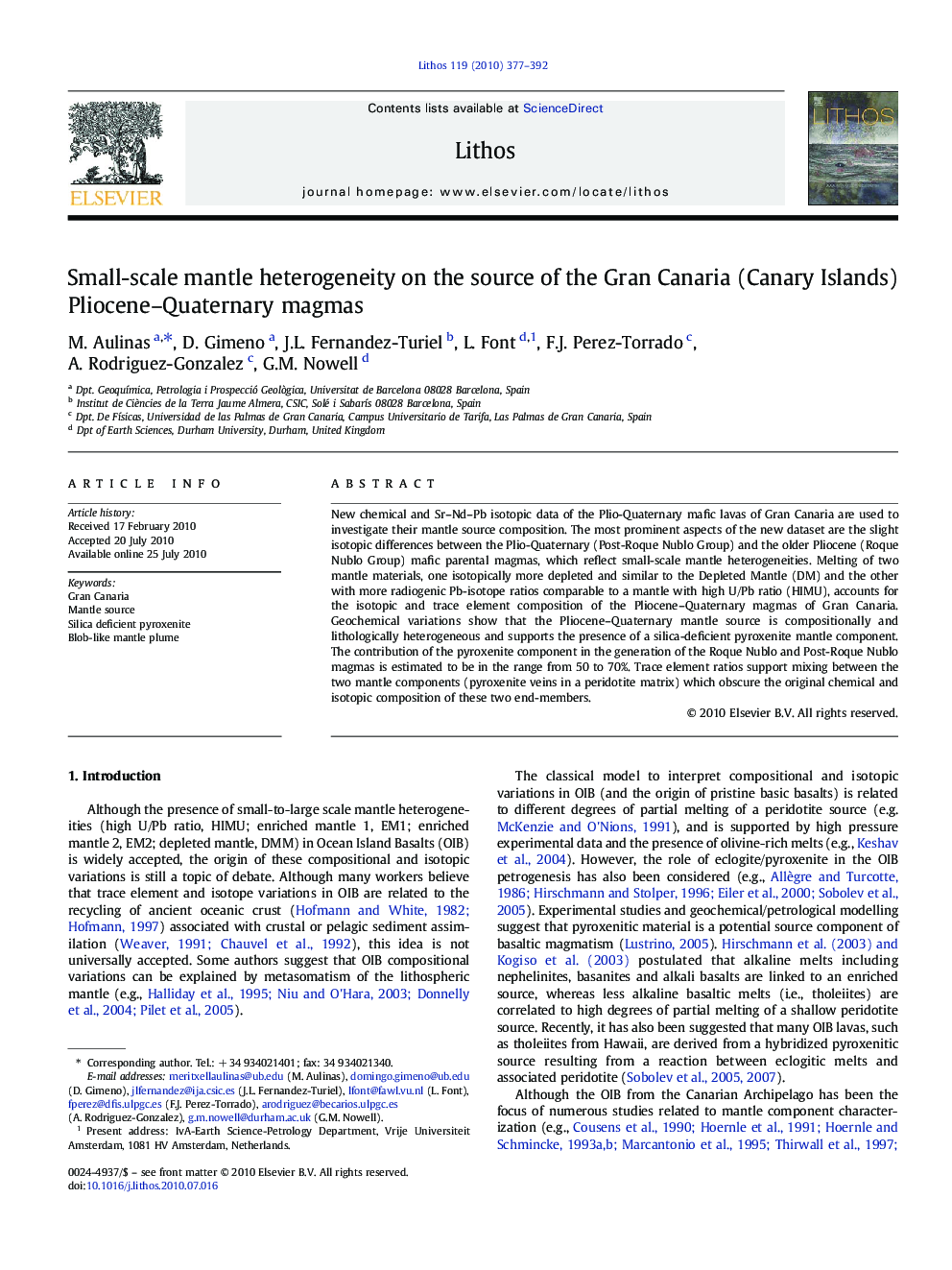| Article ID | Journal | Published Year | Pages | File Type |
|---|---|---|---|---|
| 4716881 | Lithos | 2010 | 16 Pages |
New chemical and Sr–Nd–Pb isotopic data of the Plio-Quaternary mafic lavas of Gran Canaria are used to investigate their mantle source composition. The most prominent aspects of the new dataset are the slight isotopic differences between the Plio-Quaternary (Post-Roque Nublo Group) and the older Pliocene (Roque Nublo Group) mafic parental magmas, which reflect small-scale mantle heterogeneities. Melting of two mantle materials, one isotopically more depleted and similar to the Depleted Mantle (DM) and the other with more radiogenic Pb-isotope ratios comparable to a mantle with high U/Pb ratio (HIMU), accounts for the isotopic and trace element composition of the Pliocene–Quaternary magmas of Gran Canaria. Geochemical variations show that the Pliocene–Quaternary mantle source is compositionally and lithologically heterogeneous and supports the presence of a silica-deficient pyroxenite mantle component. The contribution of the pyroxenite component in the generation of the Roque Nublo and Post-Roque Nublo magmas is estimated to be in the range from 50 to 70%. Trace element ratios support mixing between the two mantle components (pyroxenite veins in a peridotite matrix) which obscure the original chemical and isotopic composition of these two end-members.
Research highlights► Geochemistry shows that the Gran Canaria mantle is lithologically heterogeneous. ► The presence of two mantle components explains the observed geochemical variations. ► Pyroxenite component contributes on the genesis of the Pliocene-Quaternary magmas. ► Important melt mixing between mantle end-members occurred during melt extraction. ► A blob-like mantle model is a plausible scenario for the origin of such magmas.
